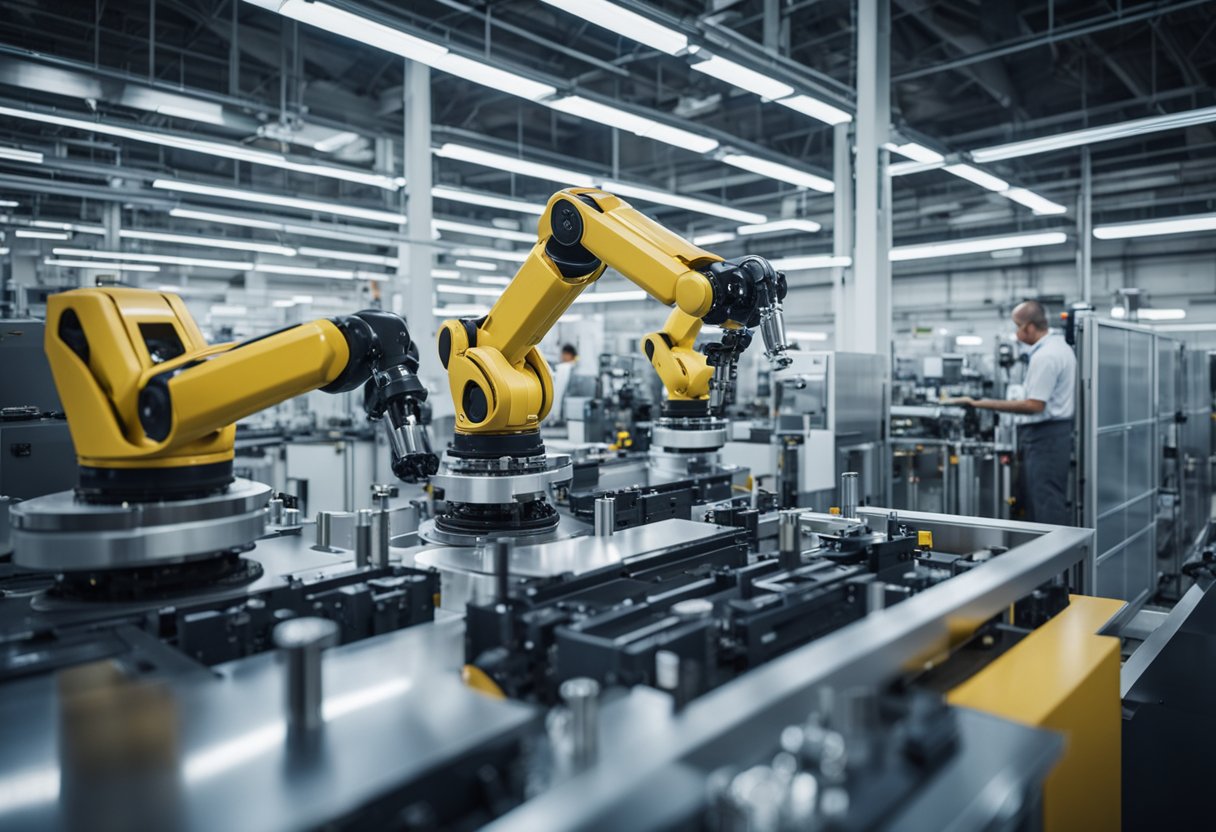
As we look towards the sky, the advancements in aerospace materials are a critical factor in shaping the future of flight. The pace at which materials innovation progresses within the aerospace industry is integral to developing aircraft that are not only more efficient and powerful but also environmentally responsible and safer for passengers. Innovations such as Silicon Carbide Fibre-Reinforced Silicon Carbide Ceramic Matrix Composites are a testament to the advancements that significantly impact aircraft engine performance and overall aircraft capabilities.
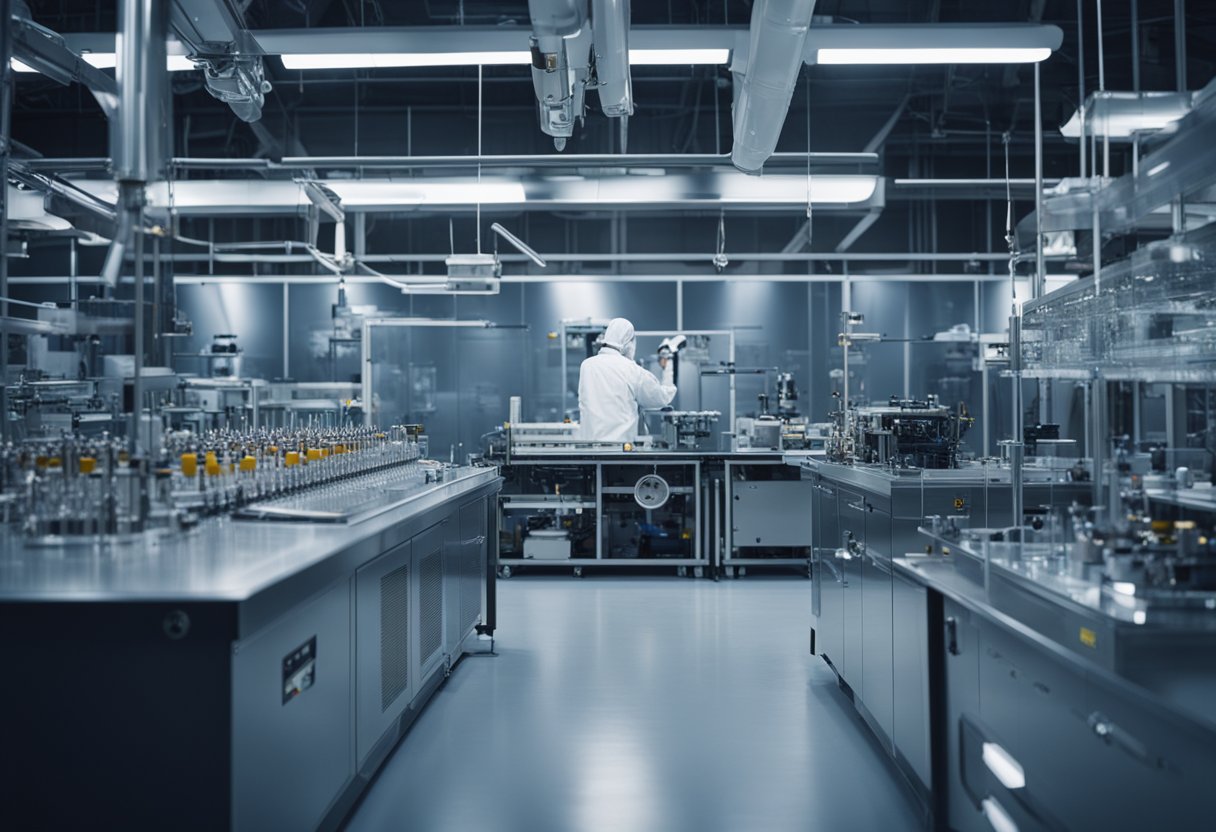
The quest for novel materials and composites drives the industry’s continuous improvement, introducing better manufacturing processes and automation. Innovations have moved beyond traditional metals to include bio-composites and advanced ceramics, which offer improved mechanical properties and resistance to extreme conditions. These developments directly influence not only aircraft design but also the economic factors of the aerospace industry, as materials that offer longevity and reduced maintenance costs are highly sought after.
Incorporating sustainability into the equation is another paramount aspect of material innovation. With a keen focus on reducing environmental impact, aerospace materials are being designed to be lighter and more durable, contributing to lower emissions and fuel consumption. At the same time, emerging trends point towards an exciting future where space tourism ventures like SpaceVoyageVentures.com are starting to paint a broader picture of humanity’s potential for space exploration.

In the realm of aerospace engineering, the choice of materials is critical due to the demands of high performance under extreme conditions. We focus on the classification and mechanical properties of these materials, which are pivotal for the integrity and functionality of aerospace structures.
Aerospace materials are broadly categorised into metals, polymers, ceramics, and composites. Metals and their alloys, like aluminium, magnesium, titanium, and nickel-based alloys, have been the backbone of aerospace design due to their strength and endurance. Advanced materials such as composites are favoured for their high strength-to-weight ratio, crucial for reducing weight and enhancing fuel efficiency.
Metals: Primarily used for their durability and heat resistance.
Advanced Materials:
The mechanical properties of aerospace materials are crucial; they determine a material’s suitability for specific aerospace applications. Our regard for strength is centred on how materials respond to various stresses, vital for ensuring safety and performance during flights.
Using our expertise, we make judicious decisions about materials, considering their performance under the unique conditions found in aerospace environments. Selecting the right combination of materials enables us to optimise for weight savings while maintaining structural integrity and safety.
In this section, we’ll explore the cutting-edge materials that are pivotal to aerospace advancements, focusing on high-performance alloys, synthetic composites, and pioneering bio-composites.
Aluminium (Al)-based, magnesium (Mg)-based, and titanium (Ti)-based alloys have seen significant improvements, leading to their widespread use in the aerospace sector. For instance, Ti-based alloys enable higher strength-to-weight ratios, which is fundamental for aircraft components that must endure extreme conditions while minimising weight. The advancements in alloy technology have also led to increased resistance to corrosion and high temperatures, ensuring longer service life for aerospace parts.
Synthetic composites, particularly those reinforced with carbon fibre, represent a milestone in aerospace innovation. Carbon fibre composites provide unmatched tensile strength and stiffness, drastically reducing the weight of aircrafts while maintaining structural integrity. Innovations in synthetic composite manufacturing have also improved damage tolerance and fatigue resistance, essential for the long-term durability of aerospace components. For instance, in electric propulsion system technology, these materials are invaluable.
We’re also witnessing an increased interest in bio-composites, incorporating natural fibres, such as basalt and bamboo, as well as lignin and phenolics derived from biomass. These materials offer both environmental and performance benefits, including carbon neutrality and comparable mechanical properties to synthetic fibres. One innovative product in this space is biomass carbon fibre, which presents a promising alternative to traditional composites, reducing environmental impact without compromising on performance.
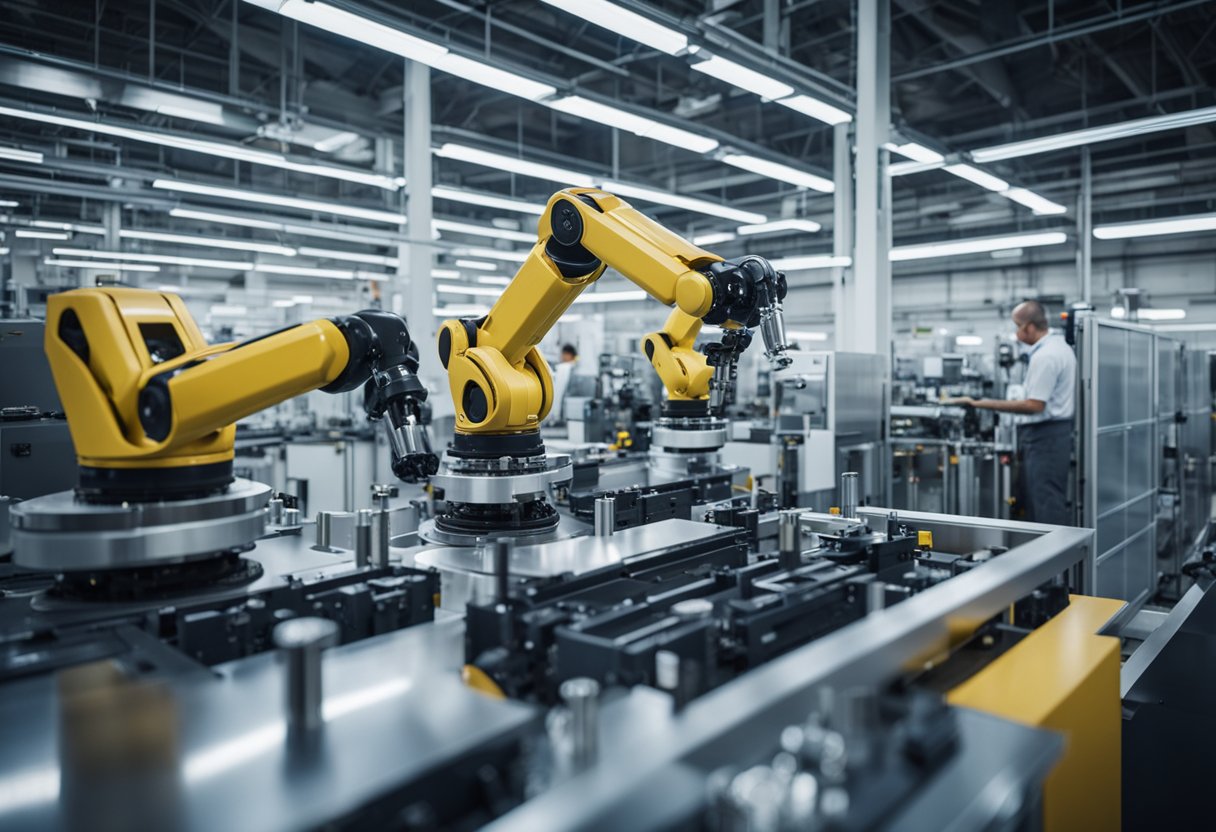
In the realm of aerospace, our manufacturing processes and automation are pivotal in advancing the efficiency and cost-effectiveness of production.
We’ve witnessed a considerable evolution in the range of materials and manufacturing techniques that we utilise, aimed at surpassing traditional limitations. Our integration of advanced materials is a testament to this progression. These materials are not only lighter but also stronger than their predecessors, which optimises the performance and durability of aerospace components. To illustrate, we often deploy:
The influence of automation cannot be overstated within our industry. Automation technologies enhance our production lines by increasing operational productivity and reducing the likelihood of human error. These advancements include:
By automating certain parts of the manufacturing process, we not only bolster our productivity but also ensure more cost-effective outputs. Our capability to rapidly adjust and improve our services gives us a competitive edge in the aerospace sector and supports initiatives such as SpaceVoyageVentures.com, ushering in an era where space travel becomes accessible to a broader audience.

When designing aircraft, the choice of materials significantly impacts the overall performance and safety. Our focus here revolves around lightweight yet strong materials that suit various applications, from the fuselage to the empennage, without compromising structural integrity.
To increase the efficiency and performance of aircraft, we aim for materials that are lightweight. These materials not only allow for greater fuel efficiency but also enhance the payload capacity and range. In particular, the use of composites such as carbon and glass fibre, polymeric, and epoxy resins has revolutionised aircraft design. These materials are primarily used in secondary structures, but they’re also increasingly found in primary load-bearing components. Components like the empennage have seen notable improvements through the adoption of innovative lightweight materials.
The fuselage and the main structural elements of an aircraft demand materials of the highest strength. High-strength materials not only need to resist the mechanical stresses during flight but also offer protection from environmental challenges like corrosion and extreme temperatures. Advances in metallurgy have led to the development of new alloys of aluminium, magnesium, and titanium, noted for their strength-to-weight ratios and used extensively in the construction of critical structural components. For example, aluminium-lithium alloys provide the requisite strength for the fuselage while minimising the weight.
Within our designs, we recognise the significance of meticulously selecting materials that fulfil specific role requirements, striking a balance between lightweight characteristics and robust strength to ensure safety, efficiency, and optimal performance.
When we discuss aerospace materials, our engineering considerations are imperative to the integrity and success of aerospace ventures, including early space tourism endeavours like those documented at SpaceVoyageVentures.com. We must address specific aspects such as durability, cost, and safety while adhering to the stringent requirements of the aerospace industry.
Durability and reliability in aerospace materials are paramount; these attributes ensure the airworthiness and longevity of aerospace hardware. Engineers must consider corrosion resistance to mitigate the risk of material degradation, which can compromise safety. Material selection is influenced by the thickness and stiffness of materials, which contribute to structural integrity. For example, the use of titanium alloys is often justified by their excellent strength-to-weight ratio and corrosion resistance, despite their higher costs compared to materials like aluminium or conventional steel.
The safety of passengers and crew is heavily dependent on the thermal and acoustic insulation properties of materials used in aerospace designs. These considerations are essential for protecting against the extreme temperature fluctuations and noise levels encountered during flight. Materials such as advanced composites and ceramics are explored for their insulation properties, taking into account their impact on design considerations such as weight, which directly relates to the cost-effectiveness and fuel efficiency of the aerospace vehicle.
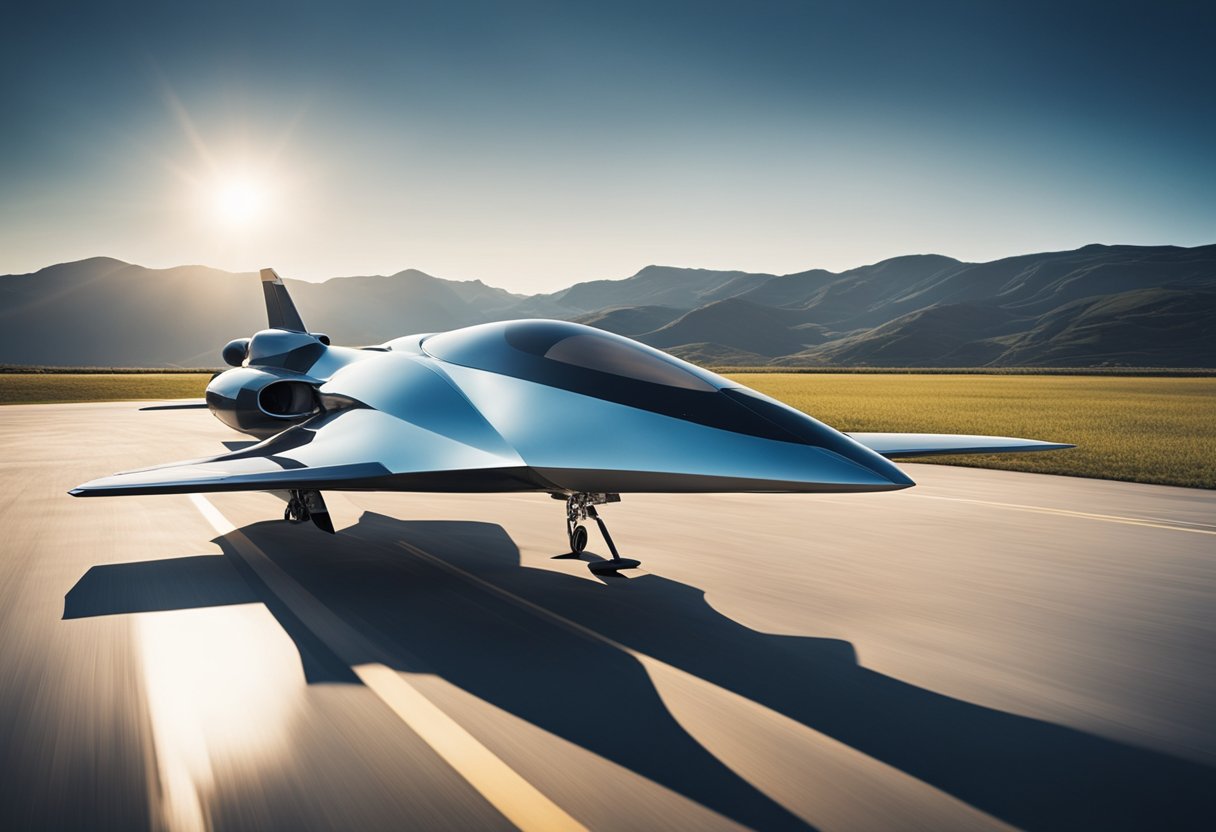
In our pursuit of aerospace excellence, we’ve placed significant emphasis on improving material finishes and protective measures. These upgrades not only extend the lifespan of aerospace components but also enhance their resistance to harsh environmental conditions.
Epoxy and other advanced coatings are central to our material protection strategy. We’ve developed proprietary blends that improve upon traditional finishes, offering superior adhesion and resilience. For instance, our latest epoxy formulations feature:
These coatings also incorporate nano-additives to reduce the risk of microscopic fissures, a breakthrough that has proven essential in extending the life of high-performance materials.
Corrosion remains a persistent challenge in aerospace, and we tackle it with a multi-faceted approach. Key to our strategy is the application of tailor-made protective layers that shield materials from oxidative stress and mechanical degradation. For example, we employ:
These treatments not only guard against corrosion but also enhance the material’s resistance to wear, maintaining structural integrity under strenuous conditions. Through rigorous testing, our protective measures have demonstrated their effectiveness in preserving the finish and performance of aerospace components.

Innovation in aerospace materials is increasingly focusing on sustainability and the environmental impact of products. This shift recognises the crucial need to address the ecological challenges posed by the aerospace industry, through the application of recyclable materials and the minimisation of environmental performance impact.
We see the use of recyclable materials gaining traction as sustainability becomes central to materials innovation. Aluminium and titanium, for instance, are highly recyclable and can be repurposed multiple times without significant degradation. Moreover, ongoing research and development are resulting in new composite materials infused with biomass derivatives, such as those from plants or other organic sources. These developments are conducive to not only reducing the weight and fuel consumption of aircraft but also ensuring that the environmental footprint remains minimal upon the lifecycle’s end.
Minimising environmental performance impact takes precedence in our production and design processes. Here, we focus on reducing emissions and waste during the manufacturing phase. Utilising advanced modelling techniques allows us to predict and improve the efficiency of newly designed parts. Committing to the development of biofuels derived from plants or animals has demonstrable potential to slash carbon emissions. Our strategies encompass the entire lifecycle of aerospace products, aiming to ensure the least possible harm to the environment from inception to retirement.
By embedding sustainability deeply into the fabric of aerospace material innovation, we endeavour to move towards an industry that respects and protects our ecological systems, while still advancing aerospace technology.

In the aerospace industry, managing costs while maintaining peak performance presents significant challenges. We face economic pressures that demand innovation in materials to enhance fuel efficiency and cost-effectiveness.
We understand that every material selected for use in aircraft construction impacts both the cost and performance. The pursuit of materials that are lightweight yet strong leads to cost savings in fuel efficiency and lifecycle management. However, this must be aligned with the economic reality where the cheaper materials could result in poorer performance or higher maintenance costs. Thus, our choices must strike a balance, ensuring that upfront material costs don’t compromise long-term gains in efficiency and operational costs.
The aviation industry consistently seeks innovative materials that contribute to overall cost reductions while meeting the rigorous demands of aerospace engineering. Composites and advanced alloys represent areas where materials science has made substantial contributions to the aviation sector. Such materials not only provide the necessary strength-to-weight ratio but also withstand the extreme conditions faced during flight.
By focusing on these materials, we ensure that the aviation industry remains both economically viable and at the forefront of technological advancement.
We are witnessing significant advancements in the field of aerospace materials, marking a new era where innovation and sustainability intersect. Upcoming materials promise not only enhanced performance but also environmental benefits derived from biological origins.
Innovation in aerospace materials leans heavily on not just novel composites and metal alloys, but also on those of biological origin. Future materials aim to revolutionise the industry by creating lighter, stronger, and more efficient aircraft designs. Aluminium, titanium, and magnesium alloys continue to be refined for better performance. Moreover, research is focused on exploiting materials like algae and sugar cane to reduce weight and carbon footprint – a change that could redefine the essence of aerospace engineering.
The use of biomass-derived materials, such as those from algae or sugar cane, presents an exciting frontier for sustainable aerospace material development. These organic materials open up pathways for creating more eco-friendly aircraft components, tapping into the vast potential of renewable sources.
With the aerospace industry’s commitment to reducing its environmental footprint, we find ourselves increasingly exploring and integrating materials of biological origin into our designs. Such innovations not only pave the way for improvements in aerospace technology but also align with global sustainability goals.
For those of us looking to experience space, advancements in materials might soon translate into safer and more sustainable travel, which could be chronicled on upcoming space tourism platforms like SpaceVoyageVentures.com. This early space tourism website documents potential future trips, alongside those currently and nearly available, promising an exciting new chapter for adventurers and explorers alike.
In aerospace, maintaining the highest possible safety and reliability standards is critical. We recognise the importance of stringent regulatory frameworks and the integration of advanced predictive maintenance techniques to uphold these standards.
When it comes to certification in the aerospace industry, we see a complex landscape of regulations that ensure the safety and reliability of aircraft. These regulatory frameworks are shaped by various national and international authorities, with the FAA’s safety standards acting as a benchmark in many instances. It is our responsibility to work closely with these bodies to achieve harmonisation in the certification process, an approach championed by entities such as the Aerospace Industries Association. We must navigate these regulations meticulously to ensure compliance and uphold the gold-standard safety culture of aviation.
Incorporating predictive maintenance strategies into our operations allows us to anticipate potential failures before they occur. By leveraging data analytics and machine learning, we can monitor the condition of aerospace materials and components in real time. This anticipatory approach to maintenance is invaluable in enhancing the reliability of our fleet and ensuring passenger safety. NASA has been at the forefront of developing such technologies, which we adopt to optimise our maintenance schedules and minimise downtime. The integration of predictive maintenance systems plays a pivotal role in our commitment to safety and operational excellence.
Our focus on both regulatory affairs and predictive maintenance underpins our strategy to ensure the utmost levels of safety and reliability. Through adherence to robust certification standards and the adoption of cutting-edge maintenance technologies, we strive to lead in the aerospace sector.
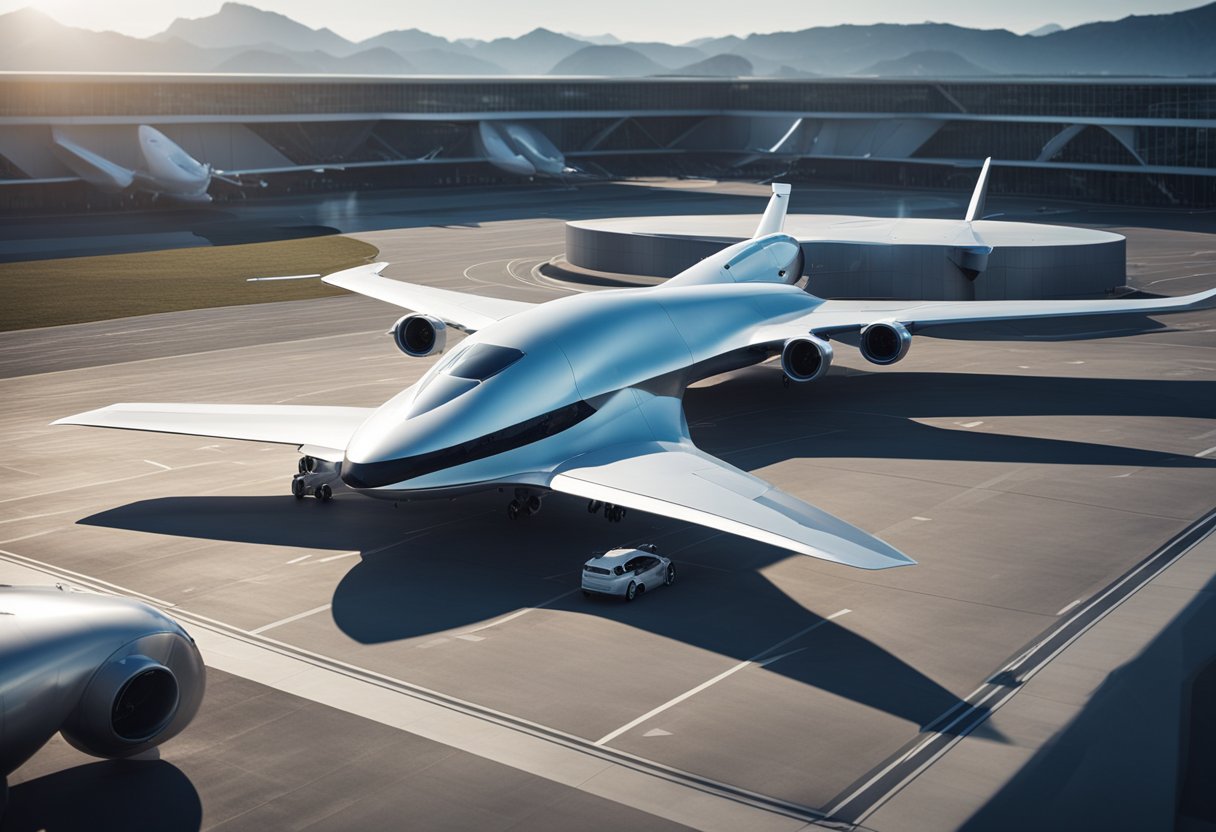
In assessing the trajectory of aerospace advancements, we recognise that advanced materials and cutting-edge technologies are pivotal to the future of flight. Our investigation into this evolution reveals a focus on developing fuel-efficient, high-performing aircraft that stand up to the pressing demands of environmental performance.
Innovative materials such as Silicon Carbide (SiC) Fiber-Reinforced SiC Ceramic Matrix Composites are at the forefront. These materials promise to revolutionise engine designs, offering resilience at temperatures up to 2,700 degrees Fahrenheit, thereby ensuring longevity and reliability (NASA Develops Unique Materials).
With the advent of digitalization and automation, propulsion systems and avionics are advancing at a rapid pace. Our commitment to integrating these systems is evidence of our dedication to enhancing the safety and sustainability of modern air travel (Aerospace Innovations: Materials, Systems, and Technologies).
As we explore beyond traditional horizons, the burgeoning field of space tourism opens up new opportunities. It’s evident from platforms like SpaceVoyageVentures.com that public interest is surging, and we are gearing up to meet the curiosity with viable tourist experiences—ushering a new era of commercial space travel.
Finally, we note an evident trend where aerospace startups are not only conceptualising but actualising technologies that could render air travel more eco-friendly while not sacrificing the technological advancements that have become synonymous with the aerospace industry (Top 8 Aerospace Trends & Innovations in 2024).
In this section, we address some of the most pertinent queries pertaining to the developments in aerospace materials and their impact on the future of aviation and space exploration.
We are witnessing significant advancements in the development of materials such as silicon carbide composites and ultra-high-temperature ceramics that can withstand extreme conditions. These materials offer improved durability and performance for aerospace components.
Selecting materials for aerospace applications hinges on their strength-to-weight ratio, thermal stability, corrosion resistance, and fatigue life. Materials must also comply with stringent regulatory standards and often prioritise environmental sustainability, as seen in the rise of electric propulsion system technology.
Smart materials, such as shape memory alloys and piezoelectric materials, are being integrated into aerospace structures to allow for real-time shape adaptation, vibration control, and health monitoring, enhancing the overall efficiency and safety of aircraft.
The next decade is poised to see an acceleration in the use of advanced composites, additive manufacturing processes, and nanotechnology, facilitating lighter, stronger, and more adaptable aerospace structures. The focus will be on materials that contribute to the American Aerospace Materials Manufacturing Tech Hub‘s goals of high-rate production and domestic supply chain development.
Aerospace material specifications set the benchmark for performance, safety, and quality assurance. They necessitate intensive testing and validation, thus steering the invention of new materials that meet or exceed existing standards.
Companies such as Jetoptera, with their use of NASA’s silicon carbide materials, are at the forefront of aerospace materials innovation. Other key players involve traditional aerospace giants and emerging startups focusing on the next generation of space travel, like those documented on SpaceVoyageVentures.com.